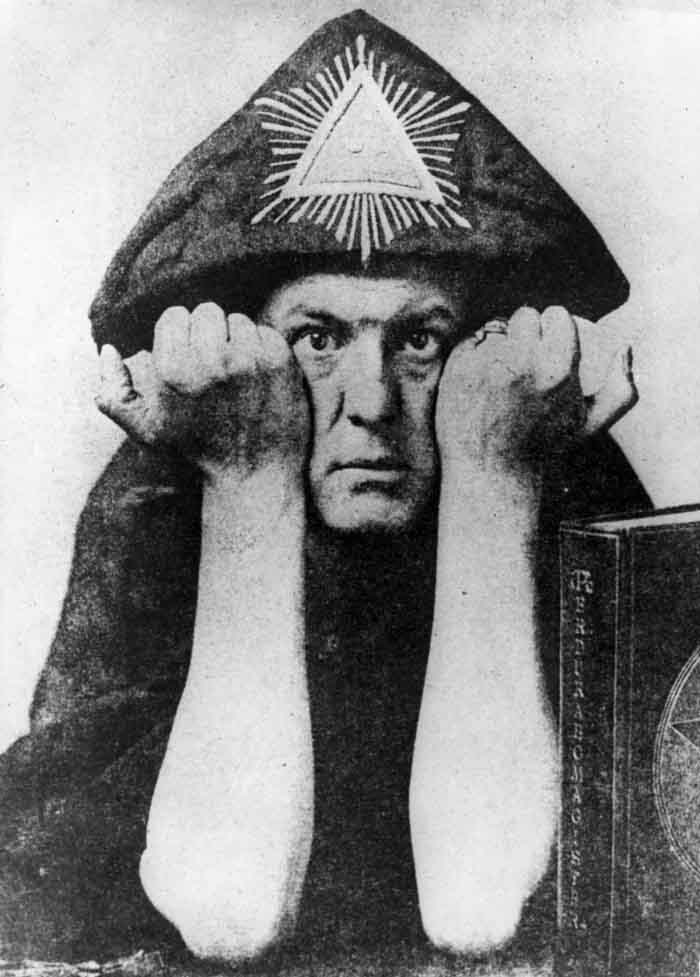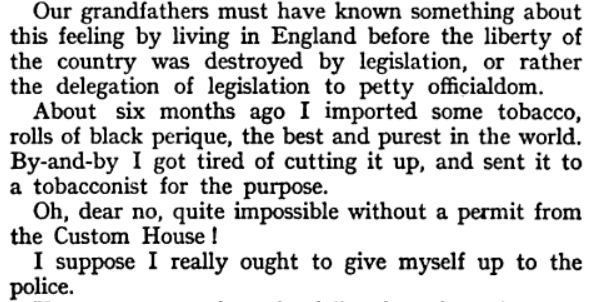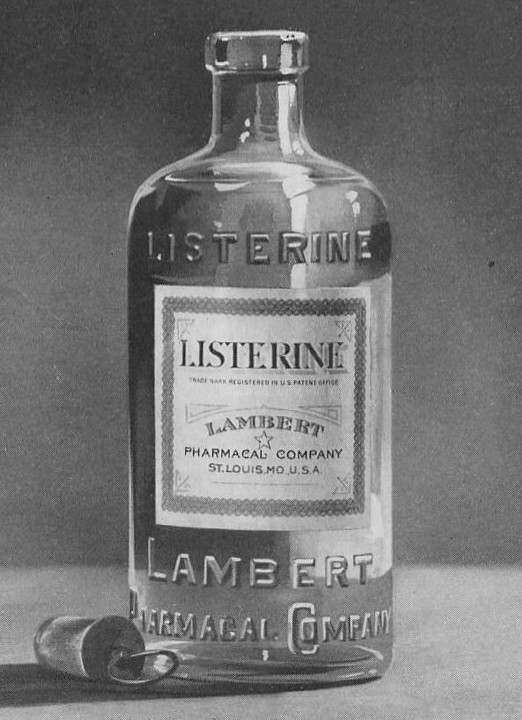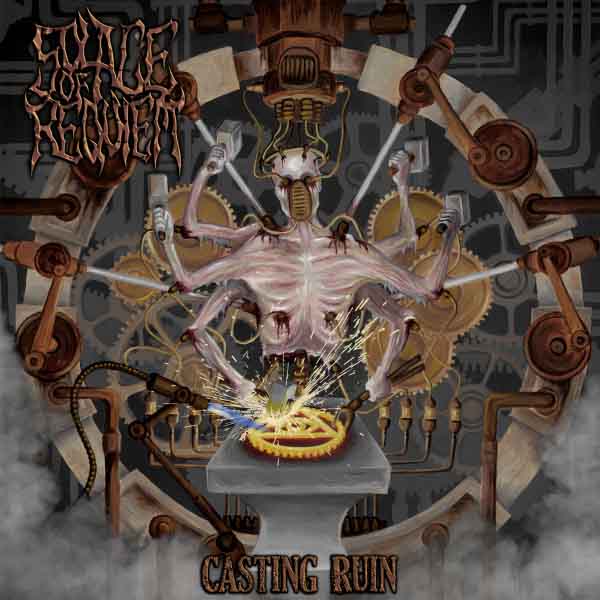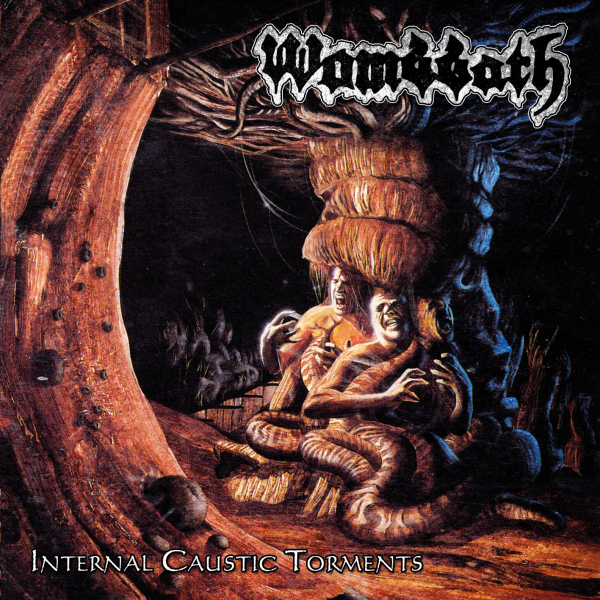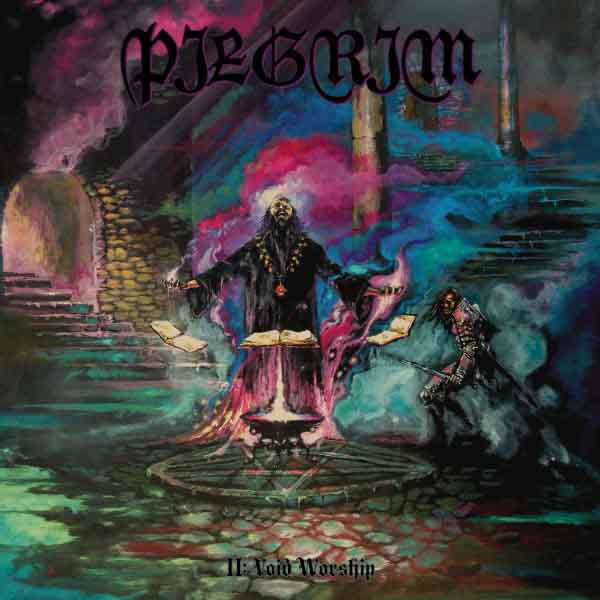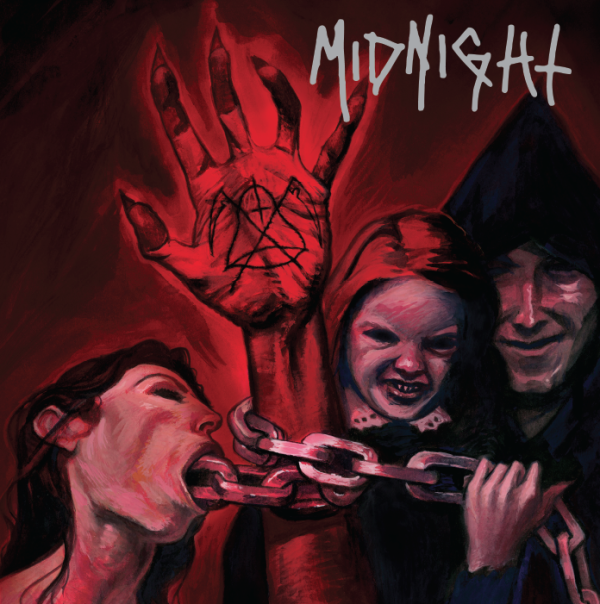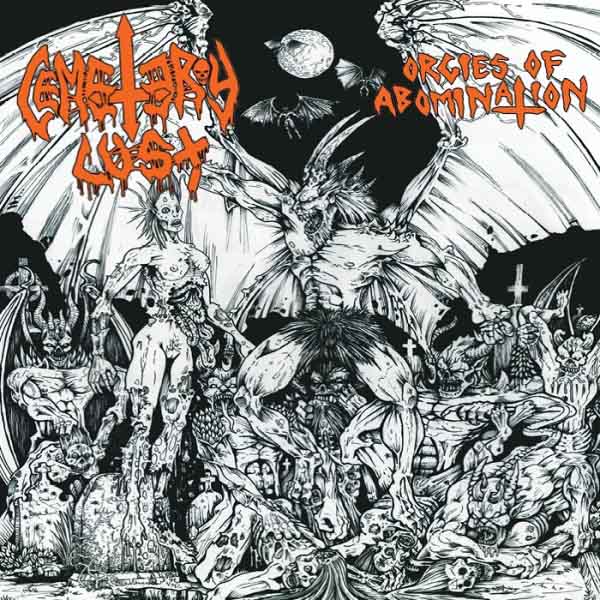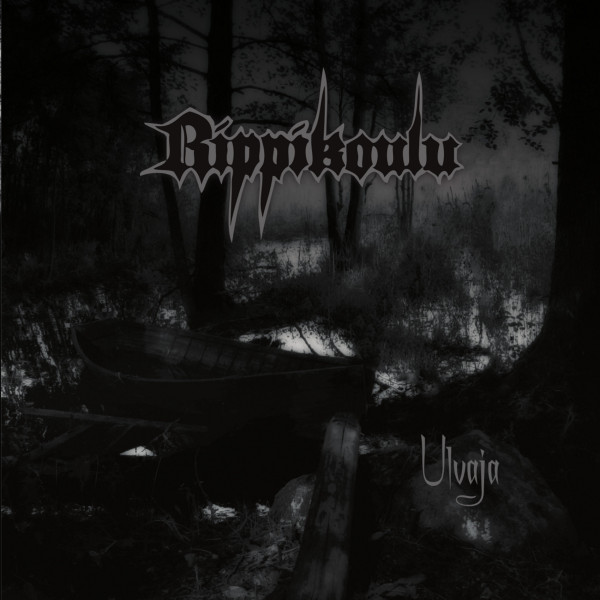Tags: aethyr, arkhaeon, battle beast, blaine rohmer, boring, coldborn, crurifragium, Cryptic Realms, diktatur, doom's day, durr metal, evil priest, gloson, grimmd, hessaja, ic rex, idiots, kratornas, lacerated and carbonized, maloic, maze of sothoth, messaja, metalcore, mordant, nephilim, Ónefnt, Óreiða, ride for revenge, sadistic metal reviews, season of arrows, self-hatred, swine soul, teramobil, the descent, the flight of sleipnir, tomb mold, tygers of pan tang, ulalatum tollunt, wrath of echoes
Black Metal, Nihilism, and Heresy
I. Degrees of an Allegory in Black Metal
Black metal, as any art, spans not only the musical, but the ideological as well as some kind of social component. Those who claim its flag range from popular musicians dressing up, to occult panderers playing at magickians, to extremists, to individuals that society would consider degenerates. There are more groups that could be mentioned but that we do not need to mention explicitly. Needless to say, all of these groups have a very different understanding of what black metal is, and what their seminal exponents such as Quorthon intended or what his work represents, or should represent, once it was out of his hands.
75 CommentsTags: Black Metal, islam, mastema, national socialism, Nazism, Nihilism, Philosophy, Religion
Sadistic Metal Reviews 9/24/2016
Some sorry schmuck has to shovel it into a hole and set it on fire.
32 CommentsTags: Altered Perceptions, Amphisbaena, Anal Blasphemy, Aum, black 'n roll, Black Tomb, Celestial Grave, Chine, crypto-indie, deathcore, Faustian Dripfeed, Gespenst, hammerheart records, Hellbringer, hells headbangers, hipster bullshit, Hoath, Ill Omen, Iron Bonehead Productions, Mare Cognitum, metalcore, Rebaelliun, Rest, Saboter, sadistic metal reviews, Seventh Xul, Shadecrown, Shataan, Shokran, sig ar tyr, Sol Sistere, Soulwound, Summit, The Black Twilight Circle, The Hell's Decrees, The Last Band, Vlad in Tears, War Metal, Warpvomit, Wyruz
Cornell & Diehl Small Batch – The Beast (2016)
Interest grows in The Beast, the latest concoction by famed blending house Cornell & Diehl, which was inspired by Aleister Crowley and built around his favorite recipe of rum soaked Perique. As it turns out, all of the lore and fame is deserved, because The Beast is a densely flavorful blend for the experienced smoker without going overboard and becoming the dreaded “acquired taste” that is not enjoyable by the casual smoker.
St. James Parish Acadian Perique is notoriously difficult to work with. This tobacco is fermented under pressure in barrels to remove some sugars and bring Nicotine to the fore, giving it a reputation as an ingredient in high-powered blends. In the presence of different tobaccos, it reveals multiple faces of its flavor: sometimes an acidic fruity taste, or the sensation of pepper on a dried fig, and in some cases, it tastes almost like a pickled jalapeño. For most smokers, more than one part in ten within a blend causes uncomfortable levels of spiciness and Nicotine, so these blends are kept in the back of the pipe cabinet for the hardcores and well-worn codgers.
With The Beast, Cornell & Diehl brings a new face to Perique. At first open, the tin gives off a smell like fertilizer and olives in brine, but then the smell of the rum comes through clearly over a strong natural tobacco scent. As it dries, the tobacco and rum combine to give off an impression of fermentation with a rich undertone, like fall leaves decaying into humus. In addition to the St. James Parish Acadian Perique, the blenders added Black Cavendish, Red Virginia Cavendish and a tobacco that I think is as intense as Perique, the Dark Fired Kentucky Burley that originates as a strong leaf which gains potency when it is smoke-cured and aged.
The first match brings out the top note of rum and successive waves of sweetness as the Cavendishes and Perique wake up to the heat. Then, the dark and smoky taste of the Dark Fired Kentucky Burley rises to the fore. At this point, the tastes combine, and it is this singular flavor that dominates the taste profile of this blend to the bottom of the bowl. Imagine a summer day barbecue, with meat dipped in a sauce of tomatoes, wine, molasses, teriyaki and a shot of rum. Ablaze over the grill, it gives off an enticing scent: a rich natural smell, giving rise to a flavor as powerful as the olfactory stimulation.
The Beast smokes smoothly and gives off a milder but still potent version of Crowley’s famous recipe which is its heart. You will taste the Perique basted in rum as a spicy fruit, like peppered date-stuff jalapeños that have been charred over an open campfire. Its supporting cast is just as important. The Red Virginia comes through as a tomato-like, vinegar-ish flavor, and together with the black Cavendish, it sweetens the blend and makes the spice and fruitiness blend into the rest of the leaf to create a single flavor. The Dark Fired Kentucky Burley creates the barbecue effect and lifts this blend up into the realm of serious intensity in both Nicotine and woodsy, nutty, natural flavors.
The wisdom of the blenders comes through in how little the top flavor obstructs the natural flavor of tobacco underneath, and how well these different leaf types meld together into a single flavor that is all their own. Some will taste notes of ketchup, leather and perhaps a hint of a fine stout beer; others will note the smoky tempest of the dark leaf alone. But really, these are fragmentary descriptions. The whole comes together into a mulled, smoky flavor with the fruity/peppery flavor of the Perique channeled into a sweet and spicy mixture. It burns evenly, down to fine grey ash, and while it pops out of the tin relatively moist, requires little if any drying. I left these samples in the pipe for only a few minutes before setting them gratefully ablaze.
Now, a bit of warning. This is a Crowley-inspired blend, and it probably is not for the newly-minted pipesmoker or those who look for the word “mild” on the shelves of their local brick & mortar tobacconist. In intensity of Nicotine strength, The Beast is probably medium to strong or slightly stronger, with the mysterious effect of the Perique which brings out additional dimensions to the Nicotine effect. You may find yourself making goat horns on the side of your head with your fingers, or perhaps chanting in mixed Hebrew and Enochian toward the stars… it is not a knock-yourself-flat blend, but this leaf has a potency that will satisfy even the most hard-driven pipe smokers while not damaging the rest.
As the bowl winds down, the flavors separate from that singular core and mingle. Olives, wine, teriyaki, blood, and the fires of Hell, with hints of a sweet inner core like the smell of death on an August afternoon… mysteries from beyond the boundaries of time and space… strange eyes move in the darkness as fell voices are heard. My favorite time to smoke this is at twilight, looking out into the forest hung with Spanish moss, as human sounds recede and the tumult of nature takes over. There, a kindred sensation is felt to The Beast: a fierce independence and great strength, tempered into a picture of beauty and solitude, under infinite stars.
2 CommentsTags: black cavendish, cornell & diehl, dark fired kentucky burley, perique, pipe tobacco, pipes, red virginia cavendish, tobacco
Smoking straight Perique with the Great Beast
“Meeeeester Crowley, what goes on in your head?” came the wailing voice from the radio. Louder than that, I could hear the fluorescent lights above, and the beating of my heart. The texture of the paint on the walls seemed to break into a kaleidoscope of demonic faces. And I deserved all of it, because I had put myself here, smoking the tobacco of the Great Beast, Aleister Crowley himself.
The decision happened several weeks ago when I was reading about Crowley, a life-long pipe smoker, and his odd preferences for tobacco. Never a huge reader of Crowley — I’m more into Anton Long and Aldous Huxley for weird metaphysical science — I became interested when I read that we have no solid record of what he actually smoked, only a network of hints through his writing and rituals.
My first task then was to figure out what Mr. Crowley was indeed smoking. Lore holds it that he smoked “straight Perique soaked in rum,” but this leaves much open to interpretation. Perique originally referred to the tobacco that Pierre Chenet, having learned the method from the Choctaws, would press and ferment in barrels in what is today St. James Parish, Louisiana. This thousand-year method reduces acidity and sugars in the tobacco so that the body can absorb more of its indole alkaloids.
Unfortunately, after that time the use of the word became muddled. Some blenders coined the term “Perigue” for any Burley which had been pressed and aged, creating a fermentation effect. Sailors used to pinch some of the raw tobacco from their cargoes, soak it in rum and wind it tight in old sails to press it. And as Perique production dropped off in the 1950s, not only did some inferior substitutes arise, but many blenders phased it out of their blends, creating more confusion.
This left we step one to pipe smoking union with the Great Beast: figure out what he was actually smoking. Smoking the “real” Perique from St. James Parish seems unlikely because Perique is used in tobacco blends like a condiment in food. It has a strong peppery and fruity taste, and smoking it alone would be like drinking hot sauce or eating raw onions. Perhaps he smoked the Perique of the sailors, or “Perigue” of ingenious tobacco makers. But as with all things in his life, the clues are hidden and numerous, stretching across time and space…
First we turn to Crowley’s writings including The Diary of a Drug Fiend, in which Crowley mentions his tobacco preferences:
This deepens the mystery, as Perique is mentioned nowhere else in the book. Crowley mentions ordering “rolls of black Perique” which he then cuts manually, bringing to mind the Perique of the sailors and not of St. James Parish. But even that cannot help us, because St. James Parish Perique could also be delivered in “rolls” or “ropes,” a popular method of curing, storing and transporting tobacco. Ropes remain popular to this day, and are prepared as Crowley describes: cut into thin slices, or “coins,” they are then pushed apart with friction or “rubbed out” to produce thin-cut leaf tobacco.
So that tells us nothing, basically.
Perique remains popular today, by the way. Smokers favor it for its deep flavor and strong Nicotine content, as well as the way it can complement other flavors like Virginias (sweet) and Burleys (nutty). But to smoke it straight is unheard of, although a few brave volunteers have tried it. For that reason, many smokers are skeptical that Crowley actually smoked it straight because it is an abrasive, disquieting experience that would not have been much fun — and Crowley was a known hedonist.
This returns us to the question of what Perique Crowley was smoking. If he was smoking rum-dipped and sheet-pressed tobacco, he would have been enjoying a much milder blend than the St. James Parish Perique. But if he was smoking the St. James Perique, it seems unlikely that he was enjoying the pipe at all. Then there is the complicated term “soaked in rum.” Did he mean actively wetting it with rum? Or did this merely refer to the rum used in the sailor’s recipe, and indicate that it was not St. James Perique at all?
Luckily, Crowley hid another clue for us in his satirical social commentary, Not the Life and Adventures of Sir Roger Bloxam, in which he refers to the tobacco he kept around his darkened lair:
Admiral Fitzroy, by no means the least of English poets, was wont to observe — at least he was always putting it on his barometers — “Long foretold, long last: Short notice, soon past.” So please settle down in that Oxford Basket Chair, draw the table close, for you’ll need that jar you bought at Bacon’s in your first teens because Calverle hypnotized you into doing so, fill the old Meerschaum (the nigger with the hat is the sweetest) with the pure Perique of St. James’ Parish Louisiana, throw some coals and a log or two on the fire, and put your legs on the mantlepiece; for if the laws of weather apply to literature, this ought to be a terribly long chapter.
You can smoke a pipe, and find the port, while you wait; for I’m in no mood to write it just now. Do you realize it’s half past three in the morning?
Not only does he tell us what his Perique was — the St. James Parish variety — but by using the word “pure,” he puts emphasis on the fact that this is the Perique he wants, and nothing else will do. In a strange twist of fate, the use of St. James Parish Perique may strengthen his narrative, because if it were shipped to England it would most likely be in ropes to keep them moist for the journey, especially since Perique is sensitive to light (like the Great Beast himself) and so is often stored in forms that hide most of the leaves from the light.
(The unfortunate verbiage in the above quotation describes his Meerschaum pipe. Meerschaum is a soft semi-gelatinous stone when wet, and clever people carve things into it, then let it firm up as it dries. He is undoubtedly referring to the subject of the carving and not an actual person.)
That left only one mystery: the “soaked in rum.” He could not have meant that he drenched the tobacco in rum and then lit it because it would not have burned owing to the high water content in rum, although he would have gotten a blue alcohol flame. That suggests that his use of the term “soaked,” much like it is used today, refers to a “top flavoring” or an alcohol-based flavoring sprayed over the top of the tobacco before a final drying. Tobacco is very sensitive to moisture and molds easily, making it toxic, so alcohol is used by the water in it must be allowed to evaporate. Rum is about 40-80% alcohol.
This means that Crowley bought his Perique, cut it into leaves of a size he could smoke, and then soaked it in rum but then dried it before smoking. At last I had my recipe for going insane with the best of them. As I made preparations, I wondered if I would end up in a strange photo, making horns on my head with my thumbs, my gaze straight ahead and fixed as if on some demonic world beyond.
Step 1 was to acquire some blender’s Perique, which I did from Rich Gottlieb over at 4noggins. It comes in two forms, granulated and long ribbon, but the long ribbon is stronger so I got that and sliced through it a few times to make it easier to smoke. Then I put down a plate and dumped the Perique on it, watering it loosely with rum (some Captain Morgan’s I found under the couch) until there was some standing liquid in the plate. That, I thought, should be an adequate definition of “soaked.”
Step 2 was drying. The plate went into the cupboard and was sealed away for several days, only exposed to the light for a daily turning. The rum gradually evaporated entirely, leaving dry and stiff leaves. Sitting in my kitchen, wishing to ancient gods that I had an EMT team present in case I had made this tobacco blend wrong, I loaded up an old faithful pipe — I have no other kind — and gravity-filled it with these strange leaves, then dumped in some more and tamped the top. Time for Step 3. I took a deep breath, lowered the flame, and drew in the thick and ethereal smoke.
Pipe-smoking is not like cigarette smoking. It is more like playing a trombone or transcendental meditation: all in the breathing. The smoker starts with a blaze that sends up a lot of smoke, which is why smokers take short puffs at first; pipe smoke is not inhaled like that of cigarettes, but kept in the mouth, so short puffs are need. Then, the smoker draws on the pipe like sipping air through a straw, about every ten seconds filling the mouth with smoke and exhaling a few moments later. This keeps a steady stream of flavorful smoke through a cool pipe, delivering measured doses of nicotine to the nervous system. After a few moments when the paint screamed at me in ancient Syriac incantations, and the stove looked like the face of an Aztec war god, I settled into a normal rhythm.
And…? you ask. How was the Great Beast’s tobacco?
Good. Very good, in fact, so much that I’ve done it several times since. The rum both sweetened the Perique and removed some of its peppery edge, leaving it with a flavor more like strong brandy. The drying also reduced the wetness of the Perique so that it burns better, and somehow gave it a smoky flavor like Latakia or Dark Fired. While the Nicotine level remained high, it was more on par with my regular tobacco, Royal Yacht, and not as extreme as many ropes or the utter skull-crusher that is the Cotton Boll Twist. And the flavor toned down the spice in the perique while making its fruit flavor less extreme, giving it the complex scent and flavor palate of a fine wine, or at least what I imagine wine above the $7 limit tastes like.
I kept smoking. Strange — I was enjoying this! The flavor had gone from plum or fig to something like a dark berry dried in the sun, or even grapes at the edge of becoming raisins, but with that extra kick of spice that made the tobacco taste more vivid than sweet. The smoke curled around my head and for a moment I thought it spelled out something in Kabbalic and Alchemical characters, but then it dissipated. I shook my head clear and kept on smoking. The Great Beast may not have taken my soul, but he knew how to make a tasty tobacco blend.
3 CommentsTags: aleister crowley, perique, pipe tobacco, Satan, tobacco
Lagunitas Brewing Company – Lagunitas India Pale Ale (2015)
The great secret of hipsters is that they are K-mart shoppers like everyone else. That is: their lives lack meaning, and they fill them with objects, but they demand artisanal™ exotic and ethical lifestyle objects instead of the accessories the rest of the herd demands. The guy buying an 18-pack of Miller Lite wants only to be accepted by his social group, but the hipster is a social climber, and wants to appear unique, thoughtful, wise, “in the know,” different and unusual to his social group. That is because unlike in a healthy blue collar social group, where people want to demonstrate competence, hipsters need to show they are socially important which they do through flattering the predominant individualist opinion (SJW) and then doing something unpredictable. It is the conformity of non-conformity.
Next time you see a (giggin’, which I’m told is slang to mean without a plan) hipster cruising down the street in his Victorian moustache with 1970s porno beard on a penny-farthing cycle while texting on his iPhone 6HIV+, realize you are just seeing another shopper. He is in fact the most mainstream of shoppers, hoping that he can borrow the hipness and authenticity™ factor from a niche and extend it to the same rules of acceptance that apply to every other social group. As a result, hipsters represent a lucrative market because in their desire to be clued in, they are clueless. Everything for them is a signal, a show of appearance and lifestyle accessories for others, so they do not care about the underlying quality. They are not shopping for a Mercedes-Benz. They want a Hyundai with superheroes painted on it and a smartphone jack, which are actually easy and cheap to achieve. Hyundai puts out the same butt-stupid product as for anyone else but tricks it out, and the hipsters buy it for 30% over list. Flawless victory for commerce! This is no different than how they sell absurdly burly trucks to rednecks, or chromed-out cars to “the urban market,” or even how they make girly cars out of last year’s model for the clueless 20-something bar concubine market segment. In the case of beers, the IPA demographic has exploded as hipsters have realized they can socialize for hours just talking about their favorite IPAs, and marketers have realized that if you take average beer and dump grapefruit into it, you can sell it to hipsters for 30% over list.
That being said, the review of Lagunitas India Pale Ale is this: slightly better-than-average beer entirely concealed behind grapefruit juice flavor, this IPA has above-average alcohol and zero taste since you literally have no idea what the underlying beer tastes like. It seems like a thicker, meatier version of Budweiser with higher ABV (6.2%). It would not matter if it was horse urine because the grapefruit juice obliterates that. Luckily it is not absurdly sweet to counter the bitter citrus, but more likely, a yeasty middle of the road beer given a jolt of some of Everclear to bump it up to hipster levels. That way, they can drink alongside their wine-swiggin’ friends and still be about as drunk when it comes time to share a Lyft (via micropayments) for the trip back to their managed housing. There is simply no reason to pick up this beer unless you are buying it for the price, which at $5/22oz is acceptable in most areas. Unfortunately, it just does not deliver a pleasurable drinking experience, so unless you are picking this up for hipster cred factor, it is unnecessary like so many other things.
Quality rating: 2/5
Purchase rating: 1/5
Tags: alcohol, beer, hipsters, india pale ale, lagunitas brewing company, lagunitas india pale ale
Sadistic Metal Reviews 07-13-2015 — Why do you even bother?
Heaps of crap spilling over the mail. Why do you even bother?
Listerine Original Antiseptic (1879)
Pabst Blue Ribbon and Miller High Life are owned by Eurotrash and consumed by flanneled gentrifiers. Mogen David 20/20 is a Orthodox Jewish conspiracy to lower the standardized test scores of urban gentile males. Listerine Original Antiseptic is an authentic skid row beverage unpolluted by ulterior marketing and motives. I test it as a fellow slave to the grind.
My clear five hundred milliliter bottle displays the rich caramel color of the liqueur. The initial mouthfeel is thin to not overwhelm the palette. The taste similar to a strong, camphoraceous fortified wine. There is some mild ethanol burning as it trickles down the back of my throat but this is alleviating by the soothing menthol. The entire half-liter is soon sitting comfortably in the stomach, dulling the existential pain, and killing my liver.
Mustachioed, Nietzschean 19th century medical pioneers used this to wash their floors of the false. They dipped their wicks into the bottle to soothe the sores of regret obtained from the whores of lesser Christianities just as you drown away your father’s failed expectations in the parking lot of the A&P. Listerine is more essential to your lineage than the finest blue agave tequilas and Scottish single malts. Just as Walker’s Dry Gin fathered your father at a Connecticut country club in 1960, Listerine Original Antiseptic is what your mother drank straight from the corrugated cardboard before her loose cooch drained your father’s urethra of seminal fluid in the broom closet of a 1980s rehab clinic. Listerine is truer than true; it made you.
Temple ov Decibel – A Room Without a View (2015)…
Warlock: The Armageddon (1993)
A dark ambient album only notable for its title being a poor pun on Merchant-Ivory film featuring a teenage Helena Bonham-Carter and Julian Sands from Warlock: The Armageddon. Being one of their lighter productions, an English tourist with a dark past embarks upon a road trip across America to find his father. A redneck neopagan Luke Skywalker, magical artifacts purchased by the prop department with tickets from ski ball machines, and early 90s fashion more dated than Chuck Schuldiner’s cat shirt add to the charm. Just like slam death and beatdown hardcore, the film is not for black metal spiritualists but those who crave straight to the dome brutality. Director Anthony Hickox (Hellraiser III, Waxwork), Mr. Sands, and the underfunded effects crew meet their minimal expectations with a few clever kills, Orff abuse, a suitably goofy script, and 3DO generated imagery. Recommended for B-movie fans and hesher gorehounds unashamed of their Running Wild posters.
Spectral Lore – Voyager (2015)
Spectral Lore uses the MacBook Pro his parents bought him to generate ambient background noise he believes is Burzum meets Dark Side of the Moon. No beats are blasted, the vastness of nature is unfelt, and no minor key riffs glass over the northern skies. The only thing this Greek leech has in common with Varg is playing Chrono Trigger. The songs and their titles resemble the background synth level music from Super Nintendo platformers like Donkey Kong Country. Voyager is the soundtrack to those V’gina speculum sequences in the porno version of Star Trek: The Motion Picture as scored by the Nintendo Entertainment System’s Robotic Operating Buddy.
9 CommentsTags: 2015, listerine, room with a view, sadistic metal reviews, spectral lore, temple ov decibel, voyager
Unholy Prophecy
The forest warmed as the late afternoon sun stroked it from above. Insects rose out of their protective hiding place in the underground and ascended thermals into the high trees where birds pursued them. Far from the solar fire too bright for humans to glance into the sky at all, a school bus surrounded by dead leaves hid under the canopy of light-absorbing leaves.
“Christ on sandwich bread,” said Dennis as he vaulted into the bus. He looked around and realized he was speaking to an empty space. Shrugging, he began preparations for the ritual. He took one of the wax-streaked dimestore candles from the ad hoc plywood shelving where the driver used to sit, and put it on an old kitchen table that was propped up in back between sofas. Lighting it, he cleared the leaves and bugs from one seat, and perched on it to enjoy the ninth cigarette of the day. As he was finishing, the emergency door at the rear of the bus batted open.
“World’s gone crazy,” said Mark Reissdorf, with his inseparable best friend Thomas Nagel in tow. They each took seats on one of the four sofas that formed the seating area at the rear of the bus. Dennis and Thomas gathered dead and fallen branches, cramming them into the fire pit as Thomas wedged a newspaper from his pocket between them. Soon a fire blazed and smoke leaked from the bus into the woods.
Finally they heard more footsteps through the leaves and Mark leaned out the door to give Sam a hand in. Sam stood taller than any of them, but also carried extra weight, the consequence of being both the bullied youngest sibling in the Bormanns household and as a result, the one his mother soothed with treats. He dug around in his insulated vest and found a plastic sandwich bag which he flung onto the table before them. “It’s from Canada,” he said. “Where’s R?”
Thomas shrugged, and Mark and Dennis made me-too motions with their eyebrows. Sam grunted, then began rooting around in the bag.
“It’s not time,” said Thomas.
“Shut up,” said Sam. He towered over Thomas, but the smaller boy held his ground. “We have to stay true to the ritual. Defenders of the Faith.”
“You’re right,” said Mark, holding the syllable for just long enough to crucify it with a short word as if punctuation: “Fag.”
They all started giggling at that point. Then the front door of the bus opened — only R used that one — and he stepped in, chilly in his sweater and jean jacket. Where the other boys had long hair, R had none whatsoever. He had in fact shaved his entire body only because he discovered that it freaked out over 85% of the people he encountered on a regular basis, where tattoos and piercings hovered in the 60s, drug use in the 50s, and casual sex in the teens. When R stepped into a room, most people recoiled in fear. He loved that.
Mark threw more wood onto the fire, which now blazed up in the fire pit and filled the bus with smoke. R took a bong and a bottle of Old Valley Road bourbon out of his backpack. Sam tossed in the bag of weed. Mark pulled out a handful of pills and a knife, and Thomas tossed in a bag with traces of cocaine. R — his real name was Ron Carpenter, but he told everyone in freshman year that his name was actually DLANOR and he was from Sumeria, so no one trusted any name he gave — pulled out a key from his pocket and unfastened the padlock on the plywood box. Inside was a portable stereo. He plugged in his off-brand MP3 player and cranked the volume to ten. No one mentioned the week they had spent burying wire to snake a line off the nearest streetlight, nearly a half-mile away, but they all swelled with pride at the ability to have their music in this remote place.
The sounds of Hellhammer filled the bus. They simply did not trust any music or — well, anything — from any more recent time. The 1980s was when it fell apart. People like to talk about what a great decade it was, but really it must have been a terrible decade, like looking out your window to see a tsunami of Ebola-infected sewage coming your way.
The ritual had begun.
“Today was unbearable,” Thomas said, taking his privilege as the physically weakest in what had become a combination support group, revolutionary meeting and occult rebellion. “Let me tell you all about it.”
***
His day began, he related, with going to his high school and sliding into his first class in a stupor of boredom. The teacher did not even notice, having a rubric which demanded she cover a certain amount of material per minute, and confronting late students only interrupted that. He performed the minimum, being half-awake at the time, since he had spent most of last night roaming the empty places of an adult world he did not understand or wish to enter. When his parents settled down after a few mixed drinks, and his brothers and sister were camped in front of the TV, he grabbed the packet of cigarettes they kept in the kitchen drawer and headed out. He just walked: through the parking lots, across the empty roads, trying doorhandles in buildings, down the alleys. If anyone had a problem with it, he had his flick knife and used to be a star on the track team, so it would be a fair combat at least.
“You can’t sit there,” said someone in his second-period English class. Still groggy, he asked why. “All the football players sit here.”
“Fuck off,” he said. It was his favorite retort to people, who he would like to murder with great pain and cruelty, but in his inner heart he knew what he really wanted to murder was the world. The all of it. The ugly parking lots everywhere, stupid triplicate forms, waiting in line for morons to tell you what to do, brain-dead churches and politicians and the people who followed them like sheep, and everyone else strung out on booze like his parents or heroin like his friends from the past year. They were all cowards. Thomas was a small kid and he knew that if one of the football players made an issue of it, he would be at a major disadvantage. But he always fought back, leaving them with enough wounds that they thought twice about trying again, a wisdom he learned during the early years of bullying in elementary school.
Instead, Danny the Irish-Polynesian football player came into the room, took one look at Thomas taking up the first seat in the front table, and turned to the kid who had warned Thomas and punched him in the shoulder. “Good job keeping my place for me,” he said and stormed off.
More football players came in. A couple threw books at the kid who failed to guard the place. No one else sat at the table. Thomas shrugged it off, and sat through the class. He heard whispers behind him but ignored them as the usual screwing around of idiots. Then Mr. Danforth heard a knock at the door and went into the hall to talk with the fat piggish administrator who had a form for him to sign. Thomas had just settled into the lull of the background hum in his brain when an unstoppable form hit him from behind, knocking the table forward against the wall and sending Thomas crashing into it. Right before he smashed his head against the edge, he tightened his hand around his pencil and instinctively stabbed upward. A howl came in response and more books and papers crashed to the floor as the table slammed into the teacher’s desk.
“What the hell is going on here?” said Danforth, coming back into the room with a sheaf of papers to muddle over later during a bottle of discount white wine. Two students stood covered in blood in a snarl of wrecked furniture and ruined papers.
“I, uh, fell,” said the kid who had warned Thomas, with Danny standing right behind him. But Danny had blood pouring from a wound in his armpit that looked suspiciously like a pencil.
“He stabbed me,” said Danny, pointing at Thomas. Danny eyed him warily. Thomas wanted him to attack again, so he could strike with the pencil. Again and again. Murdering his parents, his teachers and the people who designed this ugly, boring, codependent place.
“I didn’t move,” said Thomas. “You must have fallen on me. I guess you just stumbled on a pencil too.”
“Well what were you doing sitting in my seat?” Danny finally managed.
“There are no assigned seats. Get over yourself,” said Thomas.
“Thomas, why don’t you ever just go along with what people want?” asked Danforth. “Go to the office. Marsha will take you. Danny, go to the Nurse.”
The nerdy kid who had warned him scoffed. “Told you so,” he said.
“At least I’m not a suck-up to jocks because I’m a mouth-breathing nerd,” said Thomas. “You’re as dumb as they are. Just math-dumb not football-dumb.”
“Fuck you, Thomas,” said the kid.
“You go to the office too,” said Mr. Danforth.
Marsha walked ahead of them carrying the yellow slip of paper which said they were rejects. “You really know how to make a small incident a big one,” she said. “Why didn’t you just do what other people want?”
Thomas sighed. “Because other people are usually crazy. Most people wanted the new dam built that flooded the woods, most people wanted the new road that makes town loud, most people actually like that stupid class, and most people watch football and drink Coors Light. I can’t do it,” he said, and suddenly felt a little bit weak.
She turned to him and he saw her eyes, a gentle blue, had faded. “You better get to the Nurse,” she said. “I’ll tell Danforth you were bleeding. That’s true, at least.”
Lunch had been no different. Some guy in a Polo shirt wanted to take his chocolate milk, and Thomas used one of the jiu-jitsu moves he studied on the weekend and threw him. That was a problem, since behind him was a chair and behind that, a glass window. Both shattered as the unlucky dumbshit went sprawling. Thomas did not get to finish his chocolate milk. As the campus cop escorted him from the premises, he caught Marsha’s eye. It looked worried and amused. He shrugged and bowed ever so slightly, which caused laughter at her table. Most likely they were making fun of him.
He went to his job at the movie theater after that. Clean the floor, they said. He took several dozen wet floor signs, found a movie that would not be out for another hour, and swabbed the whole floor then began drying it. A woman exited the individual theater and Thomas took her arm and guided her around the wet floor. “It’s tricky,” he said.
“Is that blood all over your face?” she asked. Thomas shrugged. He noticed she did not go into the theater and the next thing he knew, the manager was tapping his arm. “Why is so much of the floor wet? We’ve had a complaint.”
“I swab it down first, then get it all at once with the bucket,” said Thomas. “That way I’m not putting dirty water back on the floor to swab the next section.”
“Why don’t you just do it–” said the manager, but Thomas finished his words. “– like everyone else. My way is more efficient. I can show you — ”
” — No, no,” said the manager absent-mindedly. He was short like Thomas and Thomas always liked him for that, and hoped he had found a beautiful short wife. This guy was better than most.
“You know what, I don’t give a shit,” said the manager. “You’re going to have to go home because we had a complaint.”
“Even if it’s a… uh… ah… not really true one?” said Thomas, searching for words.
“Yes, because if someone else complains, I look like a stupid asshole,” said the manager. “Your whole goal is to not make me look like a stupid asshole.”
“Even if it’s less efficient?”
The manager threw up his hands. “Yes… I mean, no. Do what is efficient. Just don’t cause complaints. Like, next time, use an empty theater.”
“Right,” said Thomas. On his way out, he passed Marsha. “Going to a movie?” he asked.
“Going to visit my Dad,” she said, and pointed to the door he had just left. Thomas slapped his palm over his face and when he looked up she was gone.
The only saving grace came as he exited the kitchen area behind the concession stand. “Hey, Tom, wait up,” said Mikey, who wanted to be called “Mike,” the longest-haired of the crew. “Can you swap a bud for some blow?”
“Better be the real deal,” said Thomas, feeling for a moment more grown up than his milktoast parents who never did anything dangerous like drugs, crime or violence.
“Hell yeah it is,” said Mikey. “Hey, I heard you served that Danny guy in class today…”
***
“Jesus, what a lot of drama,” said Mark.
“Jesus would have hated all of those people,” said Dennis. As the token Christian in the group, or so it was suspected, they tolerated him like they might a homosexual: warily. Dennis was pretty sure he was not gay but sometimes he wondered about Sam. Not like it mattered, he thought. A gay guy who was not a stupid asshole would be OK, but most gay people would be stupid assholes, because most people were stupid assholes and no one got a pass.
Sam shrugged, busy packing weed into the bowl of his custom modified EZ-rip bong. First he painstakingly separated weed from stems, the fresh herbal scent enveloping him like a memory of flowers, and reduced the weed itself to dust. He then intermixed this with blonde tobacco he got at the local tobacconist by swiping it and then buying enough lighters to cover the cost, paying for them, but leaving the lighters behind. He wouldn’t steal from Mr. Walton. The guy was OK — he actually looked up what Sam could buy at his age and applied the letter of the law. “If you ask me,” Walton had drawled, “We don’t need any of these frickin’ laws. But they don’t ask me.”
“What about you, Sam,” asked Dennis.
“Long day at the computer store,” said Sam. He had dropped out of school, then taken the GED, then gone on to work at a local computer parts store. Now he fixed computers for little old ladies and businessmen alike, and was generally appreciated for his attention to detail — forestalling future secondary complications — although it was universally noted that his manner was diffident, almost standoffish, in the way of people who distrust socialization itself.
Mark passed over a joint he rolled with some of the dirt-cheap weed he got from his cousin who grew it in the hills. It would get you high, like a 40 oz malt liquor would get you drunk, but it was such a blunting and numbing experience that it seemed to replace fun with a grinding duty to be wasted.
“Theme of the day was barriers,” Sam began after a few moments. “I fixed a computer, then all of a sudden, things were wrong.”
***
“Did you get that laptop set up?” asked his boss.
“Yeah,” said Sam. “Needed a memory upgrade. Got it. Want me to install the usual anti-virus and repair software?”
“Sure,” said the boss, and disappeared between the shelves. Sam got to work. This one was more interesting than usual: two layers of security, and many cryptic files named only with alphanumerics in incremental form, like 1C5AFE3C0D1F.docx, stored in a generic folder. This one looked like a mess. He set about making a system backup, then preparing to install the suite of software that shielded the machine against hacks, spoofs, viruses, subversions, and errors.
He was about halfway done when his boss reappeared. “Ah,” Sam heard over his shoulder.
“–what?”
“Not that one. You can’t look in there. Just package it up for delivery.”
OK, thought Sam. He slid it onto the thin metal shelves and filled out the ticket, then turned back to his other tasks. But the memory tormented him: all those files, obviously inscrutable for a reason. Why? And the high security — for what? One did not lock doors beyond which lay only the mundane. His mind spit out a plan before his ego could approve it, but then he found himself drawn to it, cursing his lizard brain for having come up with such a perfect attack.
He dashed through the next computer, filled out the form, and slid it on the shelf, dallying next to the cryptic laptop which he plugged in to the wall, linking a network cable to its port. Then he re-arranged some bags, dropped his keys, straightened up again and left before the boss could get off the phone.
Back at his workstation he quickly fixed a point of sale machine in from a subscriber, then used it to sneak along the network and send a wake-up signal to the laptop. Then he ran a program that snaked past its security and showed him the file system. He began to download the mystery files. As he was opening the first file, he heard the door chime on the front door, seventy feet away. He paused as a voice burbled at the counter.
Walking as if heading to the stash of tools near the front, he got a glimpse of the check being handed over. His mystery laptop. The guy who owned it looked boring, reserved, maybe even a little bit withdrawn, but not paranoid as he expected a spy or criminal mastermind to be. Sam had other problems however. Within a half-minute his boss would reach over to the laptop, and have to unplug it and possibly explain to the customer why. Sam stepped back into the doorway of the loading dock, where he knew no cameras were, and lit a cigarette, blowing smoke into the fire alarm.
As the boss racked up the cost and entered the credit card, an ear-splitting siren blared through the store. Sam ditched the cigarette in a nearby flower pot. As employees rushed toward the door, he walked to the counter, then dropped his wallet. Straightening up halfway, he hunched over the machine and yanked out both cables, letting them drop, then joined the others outside.
“Weird,” said the boss. “Must have been a smoke test.” As it turned out, one of the new employees had inverted a power connector and popped a capacitor, which was accepted as the source of the smoke. The customer left, happy, and Sam wandered outside to pitch out the cigarette. When he came back to his desk, the boss was waiting for him. “We have lots of these high security jobs,” he said. “Here are another four that need doing today.”
It became a longer day than Sam intended. Toward the end, as he waited for one machine to restore its operating system, he peeked into the files he found. Columns of figures, debits and credits, on a weekly basis. He shrugged, but then looked closer. There were duplicate files for each week, but the numbers were not the same, and even without much life experience Sam knew he would rather pay tax on the second set than the first.
The boss came back inside. “Listen team, we’ve had a bit of a shakeup. I need you three to take weekend shifts, and shifts during the week are getting halved.” Sam realized his only chance to keep his salary was to take weekend shifts, so he doubled up on those as he penciled himself in to the sign-up sheet. Still, it felt unfair. The stroke of a pen and his weekend was obliterated. The voice of his boss and someone at least would be out of a job, since the total hours might support two workers but not four. And he thought they had been doing well?
His eyes slid down the counter and to the open door of the office. The computer in there might have answers. Maybe even double sets of numbers. As if sensing his discontent, the boss walked over and pushed the flimsy door shut, locking it.
Indirectly, the lowered hours brought him great fortune. Arlo sold him a fat bag of Canadian weed for a good low price, since he now needed money to hit the clubs and he would not get it from his four-hour shifts. These guys are all screwed, thought Sam, as he walked into the parking lot. He nodded as he passed the boss getting into his car. “Thanks for taking those shifts,” he said.
***
R stoked the fire. “Those are some of the most bum-ass days I’ve heard of it,” he said. “All I had was a short day at work, then wandering around looking for drugs for you guys, and playing guitar.” He showed the calluses on the ends of his fingertips.
He worked at a place that installs solar panels. When he got really stoned, R (his mother called him Ronald, before she passed on from unspoken-of ailments) talked excitedly about solar cells. How they work by allowing photons, which are particles of light, to knock electrons free from atoms, and these then form a flow of electricity. How much energy is stored in each. But then the moment fades and R is back to his sullen, defiant self, like the rest of them both detesting the time he is in now and fearing them more obligatory adulthood to follow.
“I thought you were studying for your license?” asked Thomas.
“Not today,” said R. He shrugged and Thomas returned the gesture.
Inside the bus, the cheap portable stereo blared on, both more background noise and a focal point which like a string running through random objects, tightens and pulls them together into a story, with each piece revealing the reasons for its presence and the action implicated by its effect on the other objects in the string. As twilight settled on the world, it turned all colors to gray, as if it were revealing the actual lack of interest, sincerity and purpose to it all, Dennis thought.
The bong came around again. Thomas and Sam did a line, then dropped the dust into the bowl and inhaled it with the smoke. A glass of vodka floated from somewhere. “Good stuff,” said R. “Tastes more like rubbing alcohol than diesel. That’s how you know it’s quality.”
“About the same for me,” said Mark. “Went to school, fell asleep in all but two classes, then went to work where I stocked groceries for four hours, then I’m here.” He reached into his backpack and pulled out a bottle of cooking sherry, then added it to the table. He had scored that from a heap of expired goods.
“The best drink is a free drink,” said Dennis, eyeing the bottle. “I’ll tell you mine, but you have to promise not to laugh.”
***
Dennis got schooled at home. This was a condition of his parole, involving an incident with a car going too fast with alcohol, marijuana and underage women in it. He was proud of the arrest, really, and hoped to wipe it from his record at 18 and go on to, like his father, settle into a comfortable business and make an unchallenging life for himself. One night late in the evening, surrounded by the cathedral shapes of the campfire, he had wandered into a lysergic chasm and faced his inner self, and realized what he found was more like the shuffling obedience of his father than the wild maniacs he imagined he socialized with.
First chapter was photosynthesis. Dennis liked this because he found it fascinating how light could fuse together carbon and water molecules to make sugars, the building blocks of all life. The leaves in these trees came from a diet of sugar created by sunlight, rain and the carbon dioxide he and other living things exhaled. He got too into talking about that, because his mother cut him off and changed to a different subject.
His mother, embarrassed as always by her son’s failure to be a responsible citizen like his older brother Randall, made him recite the material he had memorized and then presented him with the least of life’s delights, the pre-printed test from the back of one of his history books. He had an OK grasp of the material, he thought. “Now?”
“It’s a weekly test and I won’t be able to give it tomorrow,” she said.
OK. He gave it his best shot, and felt pretty good about it, but when he came back from the kitchen where he got a soft drink, his mother was shaking her head as she ticked red marks down the page. “This isn’t good enough,” she said. He saw the grade: 61, or a D.
“Can’t you just, uh, give it a little bump?” he asked.
“No,” she said. “If I do that and you go back to school and fail, they will think I acted against the court’s instructions and I could get in trouble. You just were not good enough, Dennis. This will set you back a week before you can get back on track.”
He knew he was supposed to panic. There were a dozen weeks remaining however. “Fine,” he said. He sat there until she gave him something else to do, and when she petered out at about the same time Mrs. Taggart came by with the latest gossip from church, he slipped out the back door.
The court ordered him to stay busy, a state policy being “idle hands do the devil’s work” but not officially so, and this mandated his appearance at a job for life burnouts like himself. The Helping Hand thrift store hired people like Dennis to receive and sort donations, then sell them to well-meaning suburbanites for money that went into a hilarious anti-drug program that Dennis had suffered through, laughing and groaning in equal doses internally as choked his way through interminable days of videos and group activities.
Dennis wanted to get on register. At the register, he could listen to the radio, even if it was just alt-country, and stay away from the dirty back yard where they heaped up the stuff they could not sell before shoveling it all into the dumpsters that would get towed to the county landfill once a week. He asked Maisie, but she said his skills were not up to speed. “You need to be at least as fast as David on the keys,” she said. “You’re just not doing well enough.”
Grumbling a bit, but not too much, he spent his shift unloading stuff from the cars that stopped in the front driveway and sorting it out. He had gotten pretty good at it when Sean his supervisor flagged him down. “You’re not including children’s clothes in the instore pile? Because we can’t use those anymore, new state law.”
“I didn’t hear about that,” said Dennis.
“It’s on a circular in your box,” said Sean. “You know, in the employee area in back. Except I can tell from looking at it that you haven’t checked it for a week.” Sean was a few years older, definitely bigger and stupider, but always seemed to do things that pleased the adults, so he was super and Dennis was… well, gopher. Odd jobs man. A guy you trusted to do only really simple stuff because otherwise he would screw it up.
Dennis shrugged. “Are you sure you’re even cut out for this job?” said Sean. “I mean, asking as a friend, maybe you should be doing something else. Something where you’re able to keep up. I wouldn’t want you to, you know, feel left out.”
Left out. That summarized the sensation well: standing alone in the heap of junk, cast off from the lives of people who had matured past it or died or moved, looking for children’s clothes to cast aside and just knowing that Sean or Maisie would stare at it for ten seconds and find the one set of My First Non-Waterproof Pants or whatever and they would tell him again how he was no good at it. Dennis worked the heap until his shift was over instead, then took his final break to overlap with the passing of the hour, and left over the back fence, his box still stuffed with all the printed notices and neurotic whining these people felt they had to send to everyone even though fully half the staff could barely read.
He sneaked into the lot surrounding the school. Mark was on the roof, smoking a cigarette when he was supposed to be sweeping up the gym, a punishment for a prank involving a firecracker and a toilet several days before. Dennis waved, but Mark did not see him. Dennis as usual experiences the cold shiver of sensation that perhaps here he is not good enough either, or that they know he is either slumming it with them or they are slumming it with him, the nerdly dork who has done many things in life, none of them right. He sighed and walked until he was just about beneath the outer wall of the school.
“Dennis,” came a voice from behind him. He turned. Sean bore down on him with wide strides. “You forgot to clock out,” he said. “Maisie sent me to make sure you weren’t doing anything you’re not supposed to.”
As the lecture went on, Dennis shrugged at Mark on the roof, who by now has taken notice. Mark pitched aside the cigarette, and gestured with his hands: closer to the wall. Dennis backed up so that he and Sean were parallel to the wall, then stepped to his right until his should nearly touched the brick. Unconsciously Sean did the same. Dennis looked up to see Mark inching closer and lining up, then tossing over the water bucket he used to mop the gym. The heavy plastic bucket pitched forward as if ready to soak Sean, then straightened so that its bottom faced downward.
I should warn him, thought Dennis, but something inside him shrugged. Not good enough, Sean. The bucket hit Sean on the top of his head and although only a quarter filled with water, knocked him out cold.
“Give me five and I’ll be out of here,” Mark called on down.
As they went through the woods toward the bus, Mark rubbed his cold hands together. “Sure was good to see a friendly face. You guys are the only ones who understand just about anything. That school is so retarded it thinks it’s a genius, when really it’s a fat blob waving its flippers at the sun.”
***
Inside the bus there was silence. Then: “Heavy,” said Thomas. R agreed, passing over the joint.
“So,” he said. “I lied. I took my commercial license exam today, and I totally failed it. Too much smoking weed, not enough boring book. I took a walk along the river after that, looking for floaters, but as usual this town let me down.”
“Sucks, man,” said Dennis. He punched up the stereo with something new, an old recording by an obscure Finnish death metal band. The energy pulsed through the bus just as the beer, liquor, wine, dope and coke flooded their bloodstreams. But even more, they had finally forgiven each other for the failings each had exhibited that day.
Above them the roof of the bus made small metallic sounds as it gave up the heat of the day. Now that the sunlight had diminished and people could again look toward the sky, the trees emitted a cooling mist and scent of earthy wholeness created from the conversion of water, carbon dioxide and sunlight into sugars. The forest takes in the sun that would kill them if exposed directly to it for too long, the water the rest of the world cannot use, and makes them into new life with the breath of people like these lost boys and angry men in the bus.
The alcohol and drugs converted tension into relaxation, if not hallucination. But as the music gained power, it converted their rage into a love. First of metal itself, then of the world that can produce such music, and finally of truth itself — the truth they find in this music, and imagine must exist outside of it somewhere else — that reduces the lunacy and irrelevance of their days into a nuisance occupying its proper role, like that of ticks and leeches, not the most important thing ever as authority figures want it to be.
As the forest quieted and hallucinogens seeped into their brains the music seemed louder. They were travelers in a world of icy power chord riffs and gurgling roars, temporarily passing through a clearing where a 1950s schoolbus rusted under the ancient trees. Its light spread farther as the light faded from the day. R fell out of the bus first, laughing with intoxication, pulling Mark after him. Thomas leaped out next, then Sam, with Dennis almost piling on top of them.
Soon they were circling in the light cast from the opaque windows of the bush, swinging each other in circles and colliding like atoms transfering electrons, passing energy along in a new form as it escaped the ashen world where all momentum dies.
6 CommentsTags: hellhammer, spinoza ray prozak
Sadistic Metal Reviews 10-13-14
What are Sadistic Metal Reviews? The first metal album that you really connect with should be a magic experience, one that transforms your life. But a large group of people want you to apply that same feeling to their album so they can take your money, but their music is mediocre. SMR is the dividing line between the greatness and the forgettable, and we exult in the tears of the latter, for they are the sweetest of wines…
Solace of Requiem – Casting Ruin
A new epidemic trend grips metal, following war metal, which is the tendency to Angelcorpse — yes, that’s being used as a verb — a mixture of metal influences and tie the mess together with loud vocals. Fast guitars and overactive drums work for Angelcorpse, who clearly came along in the Fallen Christ vein of blasting streamlined death metal, but metal bands now are using that style like a tortilla to dump everything else into, wrap up the ends and make a metal burrito. While some bands that make burrito metal are able to keep interest, the problem with this style and the carnival music high contrast (read: randomness) aesthetic of bands like Behemoth that rose in parallel is that by turning the volume up to 11 for everything, it creates a constant flow of essentially invariant sound that possesses no dynamic and no real progression. It is thus easier to write; songs require no real internal contrast, and songwriters can stack bits of whatever they have on hand and stitch it up with some technicality. I find Solace of Requiem to be unlistenable for this reason. It is a barrage of noise that, if someone were to take any part of it and break it out into parts divided by its internal tension and then make a song of it, might work. But the whole burrito does not. The Solace of Requiem burrito includes more lead guitar and melody and some NYDM style technicality and sweeps borrowed from metalcore, but that does not differentiate its essential approach from all the other Behemoth/Angelcorpse hybrids. Like Taco Bell, it goes down quickly, is easily forgotten and leaves an unpleasant odor lingering in its wake.
Wombbath – Internal Caustic Torments
This is one of those bands that makes plodding rhythms catchy to the point that a listener will fall into the groove and not mind, but also will not seek it out repeatedly because of the sheer repetition without much of a direction. These riffs came straight out of hard rock, got detuned and had some quick fills added, but remain as predictable as listening to AC/DC covers at the local karaoke bar. The result is that Wombbath batters your brain until it gives up, then pours a layer of relatively obvious material over it, including songs that complete an arc but without any real doubt or tension in the middle, such that like the riffs, the structure of the songs themselves is duplicative and numbing. Nothing is done poorly and this band clearly shows mastery of the old school style, but what it lacks is a reason for a listener who is aware of the best of old school death metal to embrace this. Internal Caustic Torments expresses in many ways the worst of old school death metal and the tendency that caused the genre to collapse on itself, which was nailing the style and then using it to hammer out repetition like propaganda. This album could be improved overnight by introducing actual tension between the first and second riffs, then seeing where that leads and using it to reorganize these songs, because many of the raw elements are there.
Pilgrim – II: Void Worship
Stoner doom metal happened when 1970s jam music swallowed up doom metal and remains basically stuck in the 1970s, Slacker, That 70s Show, etc. mentality. In other words, it aims to dig out wonder in the smallest of things, much as stoners can find a universe in their toenails. In this case, it is not the “doom” aspect that is problematic, but the fact that this music seems designed to find the fascinating and earth-shattering in simple chord progressions that remind us of Foreigner and Journey releases but without the strong sense of harmony. Instead, it’s every stoner’s dream: just start plodding along, then jam over that until some sort of magic emerges. When you think about it, that is what the Grateful Dead did for decades, blarting out never-ending tuneless solos that incorporated every technique in the book but to no end, because there was no point, only a desire to keep the jam going for as long as possible so the audience and band could take more drugs, be more groovy, pose more in front of the flower-painted school bus and other activities for people who have voids in their souls and no purpose to their lives. Pilgrim are more musically adept than most bands which cross this desk, but they take it nowhere. Songs jam, build up, trail off. Solos and fills drop in competently but express nothing. The album has a big concept somewhere if you read the theory about it that they include with all releases nowadays — I never do — but it is not expressed in the music. Much like a recent failed indie-metal album about whales, the putative topic is not the subject matter, but a cover story for playing the same crap. Really, just go get the first Def Leppard album because it does everything that happens here but with a purpose. A vapid purpose, but no purpose is more vapid than no purpose itself. Flee.
Midnight – No Mercy for Mayhem
Warmed over NWOBHM with American glam metal glitz under a glaze of alt-death bands like Nifelheim or Gehennah. Remember when that stuff came out? It was 1998 and black metal had officially shot its wad, following death metal the dubious status of having a fully developed form but having expressed all of its relevant content three years or more prior. Thus bands thought, “Well, we have this new technology in the death metal and black metal styles, why not mix them and use them to encode the same old crap that bands were talking about in the 1970s?” You know, the safe stuff: alcohol, sex, partying and pissing off your parents. No one in a modern liberal democracy will argue with you for such an assertion of individualism and defiance of The Establishment. Thus it’s about as challenging and volatile as tap water, as controversial as feeding pigeons in a park, and the perfect product because it takes almost zero effort to make a few catchy hard rock songs with heavier vocals and more intense drums. Anyone can do it! Those were the words they used in the dying years of punk, also, which meant that anyone and everyone did do it, which ensured that the music became boring because it wasn’t about anything. Midnight isn’t about anything either. Its members are fixated only on being in a band and making some tunes that people like. That’s sort of like a chef deciding that he wants to make Big Macs instead of Filet Mignon because “people like it.” Like a Big Mac, No Mercy For Mayhem is soft and uniform in consistency and slightly sweet with a tangy sauce of rebellious high school rock. But it resembles an average of every burger ever made with the never-fail treatment of adding fat, salt and sugar, thus there is no growth, learning or evolution in it. It is simply an object, a product. And like all soulless things, it can only occupy your time, not enhance it, which means you stagnate, and you know what they say about stagnation.
Cemetery Lust – Orgies of Abomination
I suppose this is intended to sound like Autopsy, but it more sounds like the bad SOD and DRI clones of the late 1980s: really simple sing-song two-point riffs driven by the vocals to keep the rhythmic hook alive because that is basically all the song does. Rhythms are very similar to old DRI, COC and SOD as well. Lots of downpicking. Nothing is poorly done and yet this style, like all rap music, is just too simple to express much of anything especially with these entirely standard song structures. Each song consists of two related riffs, a vocal hook, and support from other instruments. The result is not exciting unless people playing stuff faster than normal excites you. Lots of tropes from middle-1980s speed metal and early death metal, but the songs never really get any momentum going and sound about thirty years old, out of date and without personality. Some things belong in the past and should be buried next to all the bands who didn’t make it because they sounded like watered-down versions of their influences. This band can join them.
Rippikoulu – Ulvaja
Funeral doom metal with death metal touches in the vein of Skepticism, Rippikoulu on this release create a convincing atmosphere that relies too much on texture of vocals and instrumentation but nonetheless is convincing. These songs begin with simple riffs and expand both depth and tonality, moving from minor-key intervals to more open intervals much like Ancient used to on its longer tracks, creating a sense of a moving target on a lengthy journey. Use of piano, strings and female vocals both soften the abrasive distortion and force more spacious dynamics, allowing other themes more room to move. While these songs clearly focus on atmosphere, the more important idea here is the change of moods like seasons, which gives them a grace and makes the distorted guitar seem actually jarring by way of contrast. Although this release is an EP and thus short, the mood created by this musical approach could be, like Summoning Nightshade Forests, the basis for a short escape from reality that reveals more about existence than direct confrontation ever could.
28 CommentsTags: Black Metal, cemetery lust, death metal, midnight, pilgrim, punk, rippikoulu, sadistic metal reviews, solace of requiem, wombbath
Black Sabbath – God is Dead?
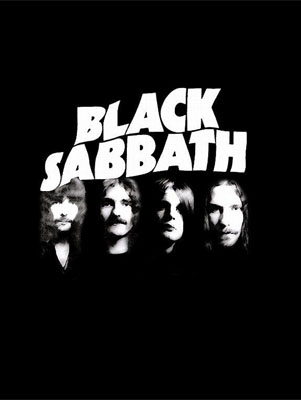 Lost in the darkness
Lost in the darkness
I fade from the light
Faith of my father, my brother, my Maker and Savior
Help me make it through the night
Blood on my conscience
And murder in mind
Out of the gloom I rise up from my tomb into impending doom
Now my body is my shrine
The blood runs free
The rain turns red
Give me the wine
You keep the bread
The voices echo in my head
Is God alive or is God dead?
Is God dead?
Rivers of evil
Run through dying land
Swimming in sorrow, they kill, steal, and borrow. There is no tomorrow
For the sinners will be damned
Ashes to ashes
You cannot exhume a soul
Who do you trust when corruption and lust, creed of all the unjust,
Leaves you empty and unwhole?
When will this nightmare be over? Tell me!
When can I empty my head?
Will somebody tell me the answer?
Is God really dead?
Is God really dead?
To safeguard my philosophy
Until my dying breath
I transfer from reality
Into a mental death
I empathize with enemy
Until the timing’s right
With God and Satan at my side
From darkness will come light
I watch the rain
And it turns red
Give me more wine
I don’t need bread
These riddles that live in my head
I don’t believe that God is dead
God is dead
Nowhere to run
Nowhere to hide
Wondering if we will meet again
On the other side
Do you believe a word
what the Good Book said?
Or is it just a holy fairytale
And God is dead?
God is Dead x4
Right!
But still the voices in my head
Are telling me that god is dead
The blood pours down
The rain turns red
I don’t believe that God is dead
God is Dead x4
Lyrically, it reminds me of “After Forever” but a bit more world-weary. Musically, it contains several allusions to past Sabbath and solo work by its members.
Thematically, it seems to me a response to black metal. Was Nietzsche’s target God, or our tendency to say nice things to each other and conceal the essential truth of the challenges before us? There are often many problems, but one root cause. If you don’t strike at that root cause, you get lost. If the problem is man, and not God, and society (collection of humans) instead of some external scapegoat, then we have a greater struggle than can be fixed by burning churches.
Black metal was purely Nietzschean in that it rejected the idea of a moral society and replaced it with the notion that the natural order of Darwinism produced better results. All of the Nietzschean tropes come out: praise of winter, of hardness, of privation, of wolves and of combat and struggle.
Black metal faltered in the mid-1990s when the bands realized that they might have missed their real target, which is something more like people socializing with each other and thus concealing unpleasant truths. While there are other intermediate and proximate causes of the problems we find it this world, the root cause often gets overlooked. That isn’t to say those other causes are good, or shouldn’t be fought in some form or another, just that they’re not the cause.
Black Sabbath is asking “Is God Dead?” and responding in the negative, pointing out that perhaps that last fifteen years of metal have been barking up the wrong tree. The first half of the song is questioning and self-centered, a personal drama. The second half, after the question is posed, is a thunderous rejoinder. The song splits on themes: the wine, the voices that fill the head (he cannot “empty his head”), the lack of any holiness outside the body that is the shrine, and the sense of a “mental death.” On the other hand, there is belief, a pervasive sense of something not fitting together with the narrative of the voices in his head.
Much is left ambiguous by this. “With God and Satan at my side” suggests a type of esotericism that mainstream Christianity will not embrace, and although there are references to the “Good Book,” a particular denominator has not been mentioned. However, the conflict between logic and intuition rises strongly in this song. On one side, there are empirical forces at work; on the other, instinct and a gut feeling. The song ultimately concludes with the idea that God is not dead.
And all of this happens under a banner formed of (a) a dour Friedrich Nietzsche and (b) a nuclear blast. This reminds me of not only black metal’s Nietzscheanism, but its apocalyptic viewpoint. In bad times, people start to get serious again about what they’re doing. Part of getting serious was, at least for black metal and probably for old Black Sabbath, rejecting what is popular and social.
Black metal is uncompromisingly against what makes people comfortable. In Until the Light Takes Us, musicians from Burzum and Darkthrone describe how they tried to get “bad” production for their music, to make it sound old and rotted. How they embraced evil imagery and acted out the most extreme things possible. This wasn’t a rejection of Christianity; it was a rejection of the social impulse behind civilization that prizes what looks/feels good to a group, to what is true — something that generally can be known by only a few, in the Nietzschean sense of the “apex predators” who have through natural selection risen above the rest and can see through a noble light how aggression is central to life.
Black metal may be anti-Christian, but more, it’s about the potentially mind-warping effects of socializing with others. Black Sabbath seems to be suggesting a new direction, which is less toward atheism and Nietzsche, and more toward sacrality, to which black metal might then respond that sacredness itself is what gets destroyed by socializing with others and obscuring the truth. This mirrors where a lot of the black metal guys went after the movement — Beherit to Buddhism, Darkthrone to cosmic space music, Varg to esoteric nationalism, the Graveland guys to folk music, and many others moving on to esoteric sounds like Jaaportit or Vinterriket.
Although they’d probably kill me for saying this, black metal people are generally the most religious people in the room. They believe that life is sacred, that forests are sacred, and that if nature is “red in tooth and claw” and life is “nasty, brutish and short,” that these are manifestations of the divine as well. Far from being “god is dead” people, black metal musicians strike me as being “we are worshipping the wrong god” people.
Hegel would argue that history moves through new ideas, their opposites, and compromises (synthesis). I would argue that history moves by the ideas created through a type of play acted out by characters representing extremes. In this, black metal shows us the antisocial, and Black Sabbath comes out for the sacred; the two will find common ground, because metal is ultimately sacred music. It worships power, death, nature and violence while others prefer pretty flowers and prancing kittens, but only one of those two perspectives embraces all of reality, while the other requires a social filter to merely exist. Black Sabbath and black metal are united in their dislike of that social filter.
27 CommentsTags: Black Metal, black sabbath, Heavy Metal, Religion






